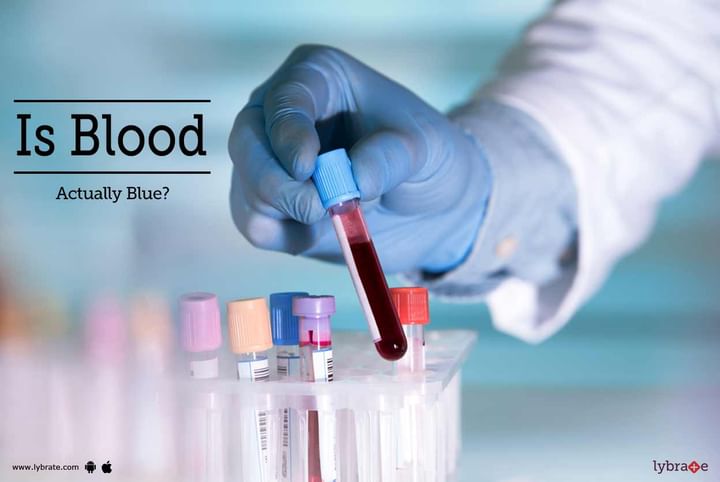Is Blood Actually Blue?
Blood is a fluid that circulates in the body and functions to provide the body with nutrition, oxygen and aids in removal of waste products. It is mostly made up of liquid called plasma which functions as the transport medium for gases. The other components are the cells – red blood cells (RBC), white blood cells (WBC) and platelets. Blood moves in the channels across the body, known as the blood vessels. These vessels are categorized on the type of the blood they carry. Oxygenated blood flows through the arterial network and de-oxygenated blood flows through the veins. Blood is observed to be red in color owing to the presence of hemoglobin in the red blood cells. But from the skin surface, the blood vessels appear to be blue in color. Does that mean the blood is blue?'
A quick glance at the wrist and it’s easy to understand why some people believe their blood is blue. After all, the veins look distinctively blue in color. But is the blood flowing through them blue? The answer is 'NO'. Red color of the human blood ranges from a bright red tint when it is adequately oxygenated to a very dark bluish red when it is deprived of oxygen. This change is due to the increased levels of de-oxyhemoglobin in the de-oxygenated blood. The blue appearance of the surface veins is solely due to phenomenon caused by the effect of light. Veins and arteries appear similar when seen directly after the removal of overlying skin.
Red light has a long wavelength (700 nm) and can travel easily through most things, even through the body tissues reaching upto 5-10mm below the skin, without being deflected. When it reaches the veins, the red light is absorbed by the hemoglobin present in blood. The use of this phenomenon is done by a phlebotomist, by reflecting red light on the arm while drawing out blood from the veins. On the other hand, blue light has a comparatively shorter wavelength (475 nm) which causes it to scatter and deflect more. Due to a shorter wavelength, the blue light doesn’t penetrate skin and is deflected back easily. This is the reason why in normal lighting conditions, the veins appear blue in color. Warmer spectrum colors penetrate through skin and muscles and are absorbed by blood whereas the blue light reflects back making veins appear blue. In very fair skinned people, blue veins are very prominent.
Lack of hemoglobin and presence of copper based hemocyanin gives a distinct blue color to the blood of certain animals like cuttlefish, octopus, tarantula, snails, lobster, squid, marine worms etc. But humans, absolutely red-blooded! No human bleeds blue for sure! In case you have a concern or query you can always consult an expert & get answers to your questions!



+1.svg)
